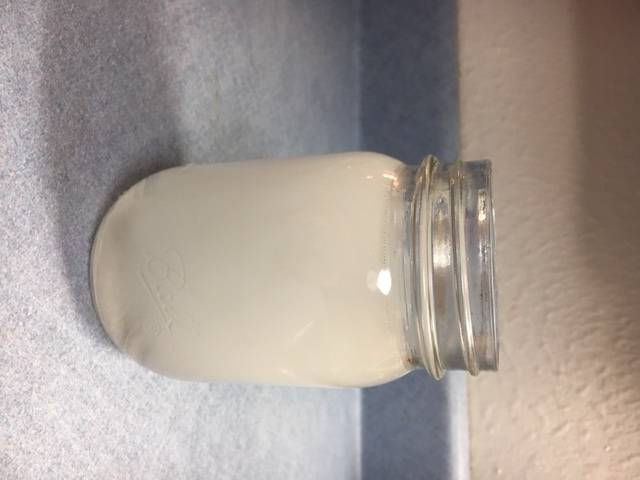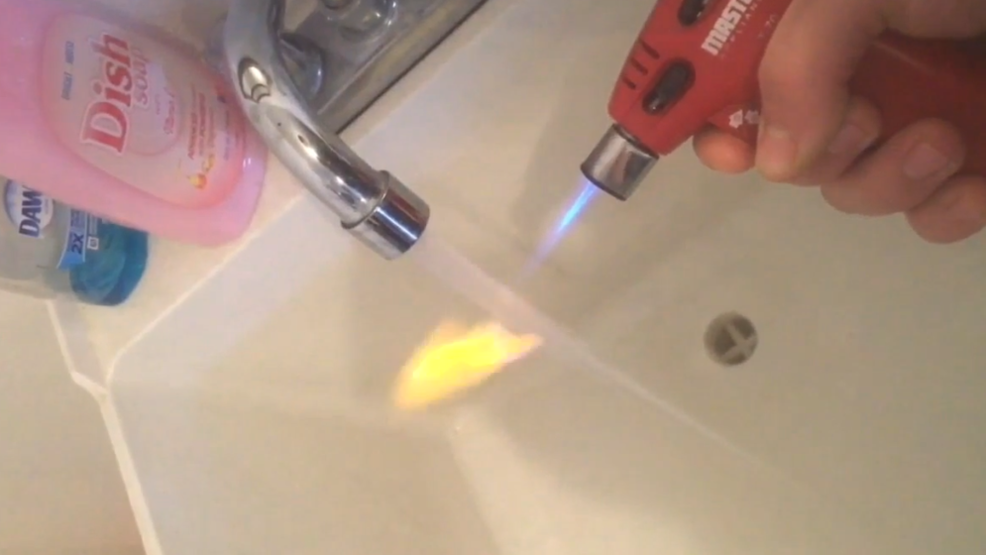On October 24, we wrote a small piece calling your attention to the Peoples Gas leak in Mahomet. At the time, we noted that at least five homes were affected by this leak. Soon after, that number bumped up to six homes, those homes serviced by five wells. That number is probably going to grow as further testing has brought the number of private wells showing elevated levels of natural gas in their water up to eleven, and that may not be the end of it.
This may seem like new stuff, but this leak was discovered on December 6, 2016, almost a full year ago, and since then, Peoples Gas has wriggled and squirmed and done everything they can to save a buck and dodge the problem, even hiring a PR firm that specializes in crisis management for the energy industry to go door to door among Mahomet residents to try and convince them that everything’s okay. When a Chicago gas company is sending someone from a Wisconsin PR firm to walk around rural Mahomet to talk about a gas leak that isn’t a problem, that’s a good sign that there’s a problem.
They started by trying to plug the leaky well, but that didn’t solve the problem of the gas that had already leaked and was still underground, so on December 21, they started venting it. That is, they started releasing it into the air. This is problematic for a couple reasons. First, methane is a greenhouse gas, which means it absorbs radiation and emits it back to Earth, which causes the greenhouse effect, which warms our planet, which melts the icecaps, raises the sea level, and wipes out ecosystems. That’s all to say that we want to avoid venting methane as much as possible—ideally, we should only vent it at a level sufficient for safe working conditions for those people moving the gas. Second, methane is a nonrenewable natural resource, and venting it is wasting it.
After three months of unregulated venting, on March 21 of this year, the Department of Natural Resources got wind of this, pun intended, and told Peoples Gas that their venting was “not acceptable,” probably for the reasons I just described. They told Peoples Gas that they needed to flare the gas, which is a process by which excess gas is burned off, the result of which is less harmful to the environment than just venting the gas.
Also in March, a homeowner asked Peoples Gas to test their water, and that test confirmed that contamination from the gas leak had spread to their private well. In April, a homeowner reached out to the Illinois Department of Public Health (IDPH) concerning their contaminated well water. This was the first time that any state agency had heard of the contamination, a little odd considering that the leak was discovered in December. In May, still in denial about the extent of the contamination their leak had caused, Peoples Gas decided to solve a homeowner’s contamination problem by digging them a new water well. About 90 feet down, they hit gas:
Whoops.
In July, Peoples Gas surmised that they might have a problem with a gas leak contaminating homeowners’ water wells, so they offered to install gas separators in affected homes. A gas separator’s function is separating gas (methane in this case) from water. It’s not 100-percent effective, but it can render gas-contaminated water safe for use. Unfortunately, this hasn’t been the fix anyone hoped for as tests are revealing that some of the homes with separators still have unacceptably high levels of methane in their water. Oh, and Peoples Gas finally got their flaring system operational.
So there’s a lot of methane in the water in Mahomet, and Peoples Gas has a responsibility to account for water and soil contaminated by their leak. That responsibility was dictated to them by the Department of Natural Resources on September 14, so in Peoples Gas fashion, they proposed to dispose of the contaminated water they would extract by dumping it on the ground. They were told that wouldn’t be an acceptable way of running from that particular problem, so instead, they got a permit to install two 6,900-gallon tanks and one 21,000-gallon tank to draw the contaminated water into. There’s a lot more than 34,800 contaminated gallons of water to be disposed of, so those tanks will have to be emptied somewhere.
Well, “somewhere” is the Urbana-Champaign Sanitary District, per a permit issued by the U-C SD on October 10. I guess Mahomet didn’t want it.
Here we are in November, and some Mahomet residents’ water still looks like this:

That actually came out of the tap of a Mahomet homeowner. And you can still set it on fire:
So other than flammable, milk-looking water, what kinds of risks are associated with having high levels of methane in your H2O?
Methane will dissipate from water, meaning it will lift out of the liquid and go wherever there’s room for it to go. This means it can gather in smaller, tighter spaces like crawlspaces and bathrooms. Methane that gathers to a 5-percent concentration in the air becomes combustible. Same place, different problem: methane can displace oxygen, so even though you’re breathing, you’re not taking in the oxygen you need to survive, which leads to unconsciousness and death. The Mahomet families wouldn’t know it’s coming because the methane leaking into their homes is untreated: it’s odorless and colorless.
These are the fears they’re dealing with every day, and it’s taken nearly a year for Peoples Gas to begin to solve the problem. They’re offering bottled water to those homes that are completely proven to be affected by this most recent leak, although a common refrain has been blaming the 1963 leak for today’s problem. Whenever you want to place the gas contaminating Mahomet residents’ water today, this is a big problem that could have far-reaching health consequences that we’re not aware of yet because we haven’t done our due diligence in studying what those consequences could be. Check out this report VICE put together on the 2015 leak in Los Angeles:
Peoples Gas is hoping you won’t care because it’s a dozen people in rural Illinois and not tens of thousands on the West Coast. Well, we care.
You can stay up to date on this issue as it develops at mahometgasleak.com. The site is hosted by Spiros Law, which is representing six of the Mahomet families affected by the Peoples Gas leak.








